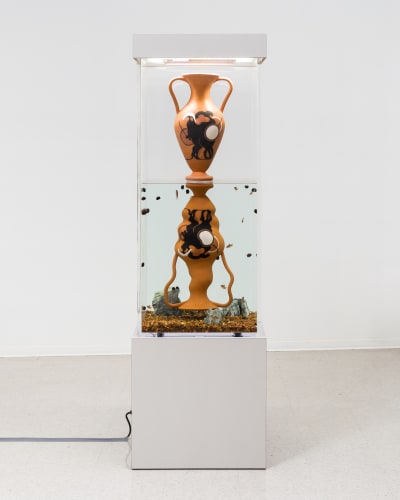
I see two types of artists: those who are working with puns and those who are not.
Is it a coincidence that Marcel Duchamp, the true-if-over-cited midwife of the readymade, grandfather of the found object, was also an avid producer of puns? Might there be a relationship, in both form and function, between the loathed and lowly pun and the repurposing, repositioning, recontextualizing, and general rethinking of given forms—that strategy once reviled, now ever-present?
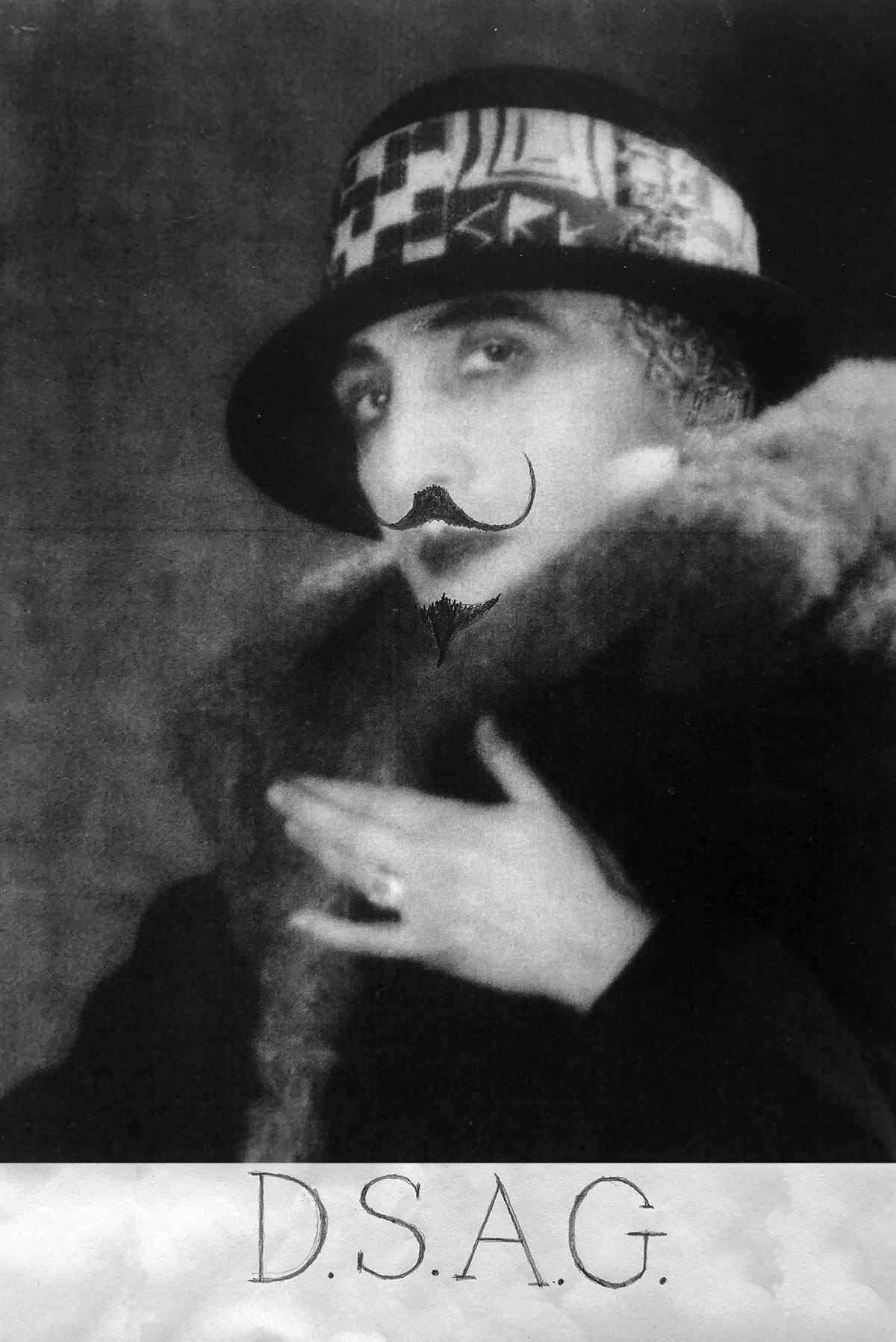
Guy Bennet, D.S.A.G. (Aging Goddess), 2021, pencil on inkjet paper. Courtesy of the artist.
In French, the letters “D-S-A-G” can be pronounced “Déesse âgée,” which can be translated to “Aging Goddess.” The work is a play on Duchamp’s well-known piece, L.H.O.O.Q., from 1919.
The brilliance of the above lyric by Johnny 5 lies in its accomplishment of three key things: it a) compellingly conveys what is otherwise a tragically tired cliché (“I noticed a pretty girl”) by not only b) resituating the terms “spider” and “fly,” playing on the multiple ways that these sounds can be interpreted, but by also c) creating and utilizing a context in which its elements are comprehensible: the words “spider” and “fly” only function because we understand that they are somehow related. Without the context of their relationship, it would be impossible to even hear the insect-words “spider” and “fly;” we would only catch “spied her” and “fly,” the adjective meaning cool and beautiful. Impressively, Johnny 5 does more than play, arbitrarily, with the varied meanings of the words he uses; his quip anticipates a recognition of these multiple meanings to be fully intelligible. What’s more, this recognition is not an end unto itself: one might, for example, go on to consider how the above statement implies a predatory relationship between the spectator and the spectacle.
Thus, we begin to discern a surprising set of parallels between the architecture of the pun and the logic of de-/re-contextualization inherent in the use of found forms in art. It could be said that puns emerge when words, phrases and sounds are treated as found objects to be recontextualized; while a pun’s constituent elements may be presented matter-of-factly or as minimally manipulated (as are the sounds “spider”/“spied her,” “fly”/“fly” above), the subtlety and particularity of their presentation leads the listener down unexpected paths, creating an opportunity to reconsider the meanings and uses of the featured terms.
Within this framework, might Duchamp’s readymades be viewed as puns of art objects themselves?
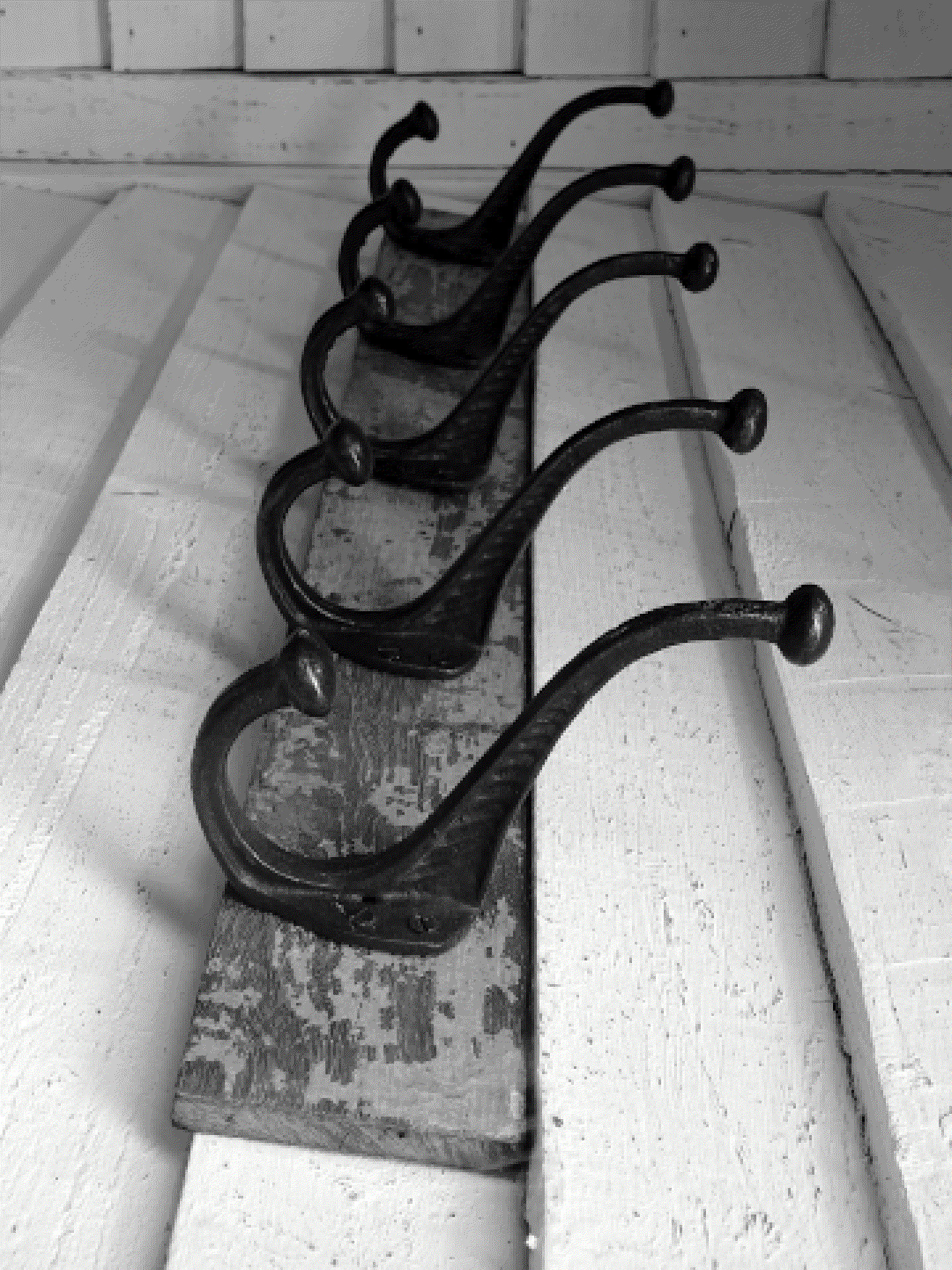
Stock image approximating Marcel Duchamp’s Trébuchet (Trap), 1917, a coat rack nailed to floor. The title references a particular position in chess wherein any move a player makes will result in a loss.
2. Sometimes a phallus is just a penis.
– Andrew Mbaruk, “Gender Trouble”
What happens when art forms, histories, styles, and strategies themselvesbecome found objects to rearrange? The astute reader might recognize this leading question’s invocation of postmodern pastiche, the oft-derided work that merely “remixes” recognizable tropes and imagery from other artistic modes, moments, and movements. In a work of pastiche, the remixed elements are treated as little more than culturally available signs, readily reduced to reference.
Fortunately, the clever pun offers a subtle alternative, surpassing pastiche by virtue of the rules that govern its organization of parts: while relying on the mixed- and mis-matched presentation of signs, the pun is fundamentally concerned with signification, its very existence predicated upon the plausible intelligibility of the meanings, concepts, and histories to which it refers. As such, puns necessarily depend on what has already been said: to be played with, words require familiar rules. It is this weaving of past (by virtue of the contingent meanings and histories upon which we rely to communicate) and present (by virtue of the particularity of the wordplay in the moment) that allows puns to defy cliché. Rather than regurgitate past expressions in all-too-familiar ways, the pun parkours played out uses of terms by intentionally resituating them.
Take, for example, the lyric by Vancouver-based rapper Andrew Mbaruk that introduces this section. As opposed to the relatively self-contained nature of the pun analyzed at the top of this text, Mbaruk’s play on words depends not on the sounds that comprise it, but on the syntax and metahistory of the phrase famously misattributed to Freud, “Sometimes a cigar is just a cigar.”
While a remix as such is principally defined by the blending of historically unrelated or previously uncombined sounds, Mbaruk’s paraphrase demonstrates how, in order for a remix to be a pun, it must not be mixed arbitrarily, or simply with respect to style or taste, but instead with an understanding of how the mix might manage to mean. A pun is a precise kind of remix; a form of context-aware, self-evident repetition that addresses and interrogates its status as a thing said before, as a play on the past. Considered thusly, we can begin to see how puns may be used to structure artworks dialectically, such that a work made in the present may “echo” the past, but in the self-aware and self-evident ways prescribed by the pun.
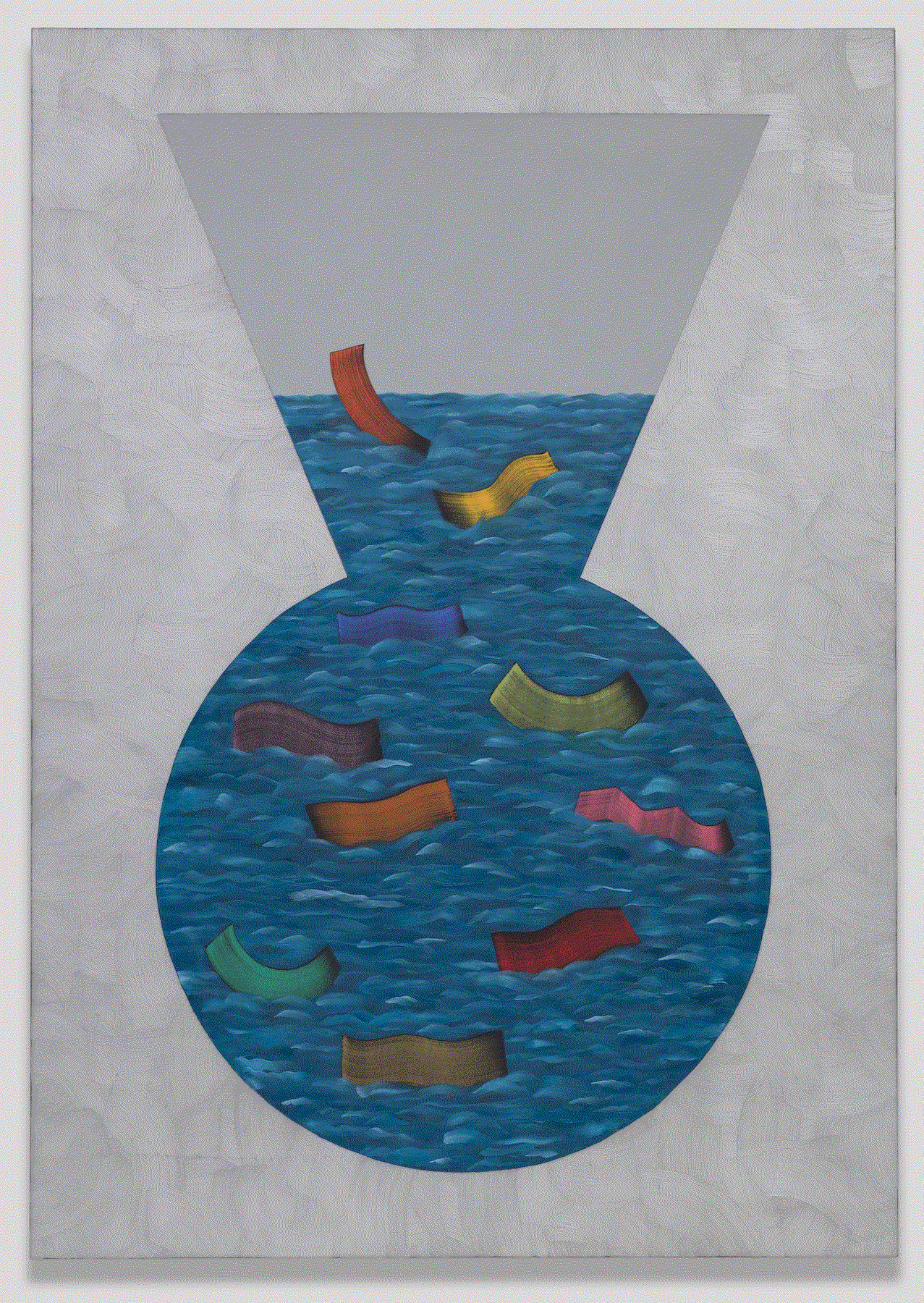
Alex Olson, Vessel (with Fish), 2017. Oil and modeling paste on canvas, 71 x 53 in. Courtesy of the artist and Altman Siegel, San Francisco. Photo: Brian Forrest.
.
Analogous to the function of the word “spider” explored above, in Olson’s painting, the brushstroke performs several roles simultaneously: brushstrokes here are at once waves, fish, images of brushstrokes, and of course, actual brushstrokes.
3. Jack of all trades is dealin’ niggas a handful.
– Earl Sweatshirt, “The Bends”
As the two examples of wordplay explored thus far reveal, a good pun requires, above all, a careful crafter. Conscious of how the elements of their quip relate to one another, to history, and to their audience, the punster paradoxically superposes self-evidence and context-dependence, sense and nonsense; their puns simultaneously negotiate the textual and the texturaldimensions of language, the union of content and form.
In a revivalist-raving, pastiche-pasting, sequel-spewing aesthetic climate like our own, the pun may provide (and indeed has provided) a “way through,” allowing artists to revisit the ghosts of (art) histories passed while succumbing neither to empty cliché nor point-less gesticulation. For example, Alex Olson’s insistence on the brush stroke as both a material fact and a recognizable sign has resulted in several works that keenly pun histories of Abstract Expression. Similarly, Cammie Staros’s recent exhibition at Shalumit Nazarian, What Will Have Being, not only utilized word play titularly; the artworks themselves demonstrated how a thoughtful pun can generate a true constellation of things.
Several of the forms in the show are works of punning conflation. Formal ambiguity defines her wall-mounted ceramic pieces, for example, as they are simultaneously classical vessels and snail shells. Aptly, Staros refers to these works as “shell pots,” describing their form as a “cross-species analogy.” As already-existing forms (“shell” and “pot”) treated as found objects recontextualized by their ambiguous unification, how else is this analogy made but by the logic of the pun?
The pun facilitates, furthermore, the ironic relationship between the shell pots—vessels that should hold water but can’t—and the vitrines—vessels that shouldn’t hold water but do. In true punning fashion, both the museum-vitrine-cum-fish-tanks and “shell pots” ambiguate the uses and meanings of their forms. They demonstrate once more how the recognition and implementation of a pun are not means unto themselves, but an opportunity to further consider the pun’s constituent elements. In this case, puns advance the exhibition’s metaphors regarding the nonhuman Earth, Classical Western culture, and rising water, activating them with greater depth, formal nuance, and play.
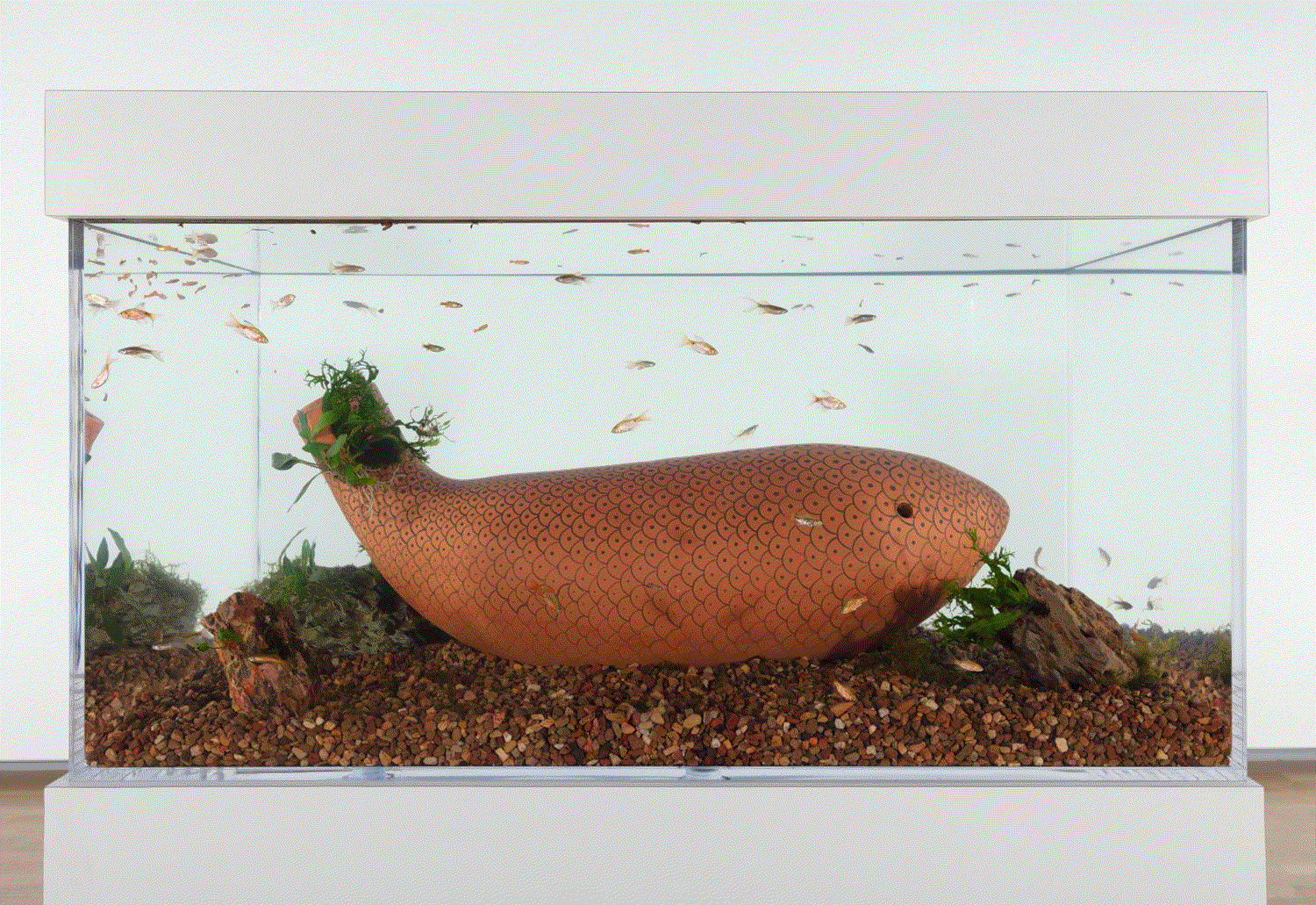
Cammie Staros, Sculptura Liquefacta, 2021. Ceramic, acrylic, wood, laminate, water, aquatic filtration system, programmed grow light, river rock (pebbles), Japanese ohko stone, Java Fern, moss, Bucephalandra, Mini Bolbitis Fern, Java Fern Windelov, Java Moss, Marimo Moss, Anubias Nana, Anubias Nana Golden, 61 x 49 x 25 in. Courtesy of the artist and Shulamit Nazarian. Photo: Morgan Waltz.
.
Q: Why reference Ancient Greek design to comment upon the Earth’s future?
A: Because it’s already ruined.
4. Duchamp’s pun-laden meddling has left contemporary artists with quite the pot to piss in.
– Dakota Higgins, “The Art of the Pun”
At their best, works of art (like puns) breathe life into dying words, dead forms, and mummified concepts. The art of the pun is to show us what canbe said by exploring the potential of what has already been said, surprising us by slyly confounding the given conventions of the languages (both artistic and spoken) that we use every day. Is this to suggest that good art is but a bad joke, a game to see who can create the most compellingly cross-referenced clichés, dressing them up with clever craft? To this charge, Duchamp may have responded, in a word: “Sélavy.”
